The Only Sustainable Sushi Bar in North America
That is just what Tataki Sushi & Sake Bar in San Francisco is believed to be.
The tiny, seven-month-old restaurant serves only seafood that isn’t overfished, farmed without proper management, or contains high levels of mercury and other contaminants.
Find out more about why business partners, Chef Kin Lui, Chef Raymond Ho, and Casson Trenor (a sustainable fisheries expert) decided to open such a restaurant by reading my story today in the San Francisco Chronicle Food section.
Tataki, the site of a former Subway sandwich shop, grabs your attention right when you walk in. A Monterey Bay Aquarium “Seafood Watch” pocket guide, which lists best and worst sustainable seafood species, is front and center on every table. A copy is also tucked into every take-out menu.
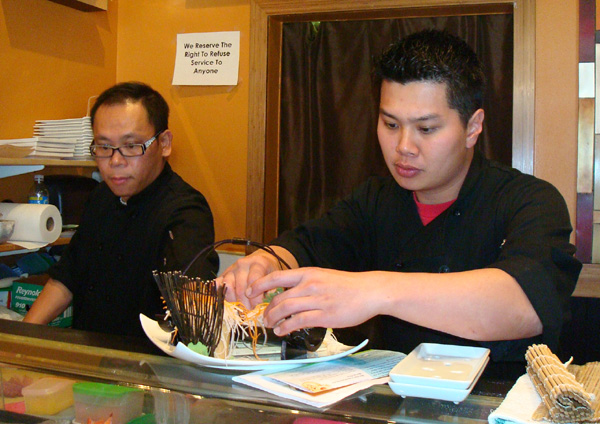
Oct. 22, Tataki will be the site of the official launch of three new, ground-breaking sustainable sushi guides created in partnership with the aquarium, Blue Ocean Institute, and Environmental Defense Fund. Each will include information on as many as 60 different seafood species commonly found on sushi menus.
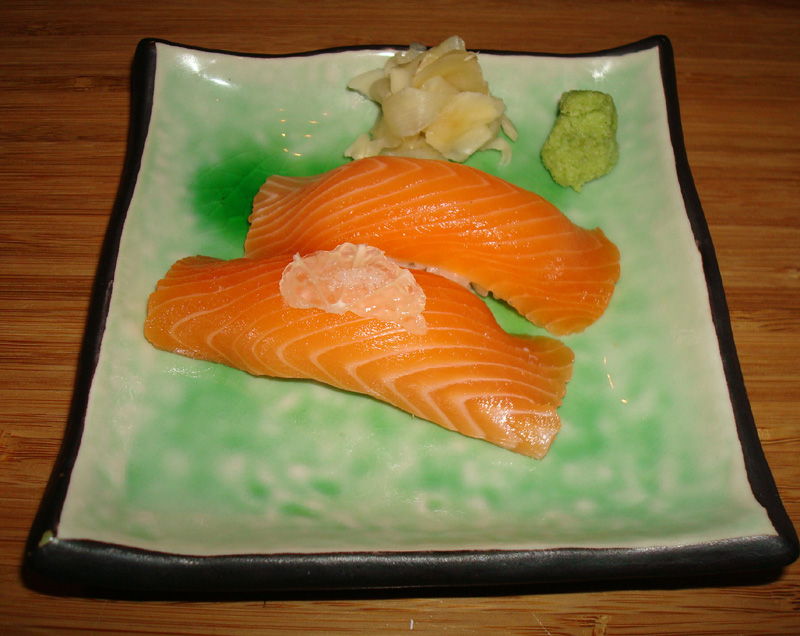
Want to do the right thing? Then, you’ll stop eating unagi, bluefin toro, hamachi, octopus (tako), monkfish liver (ankimo), farmed salmon (sake), imported King crab (kani), imported albacore tuna (shiro maguro), and sea urchin (uni) from Maine — all of which are unsustainable, according to the aquarium’s new guide.
But a restaurant such as Tataki proves you can be sustainable and still serve impeccable sushi. Local line-caught albacore stands in for bluefin, its flesh so rich and velvety, you never feel deprived. Farmed, well-managed arctic char sits in for farmed salmon here. Farmed, sustainable barramundi stands in for wild Atlantic fluke, which is caught by trawlers that catch a lot of other species unintentionally, Trenor says.
A “Golden State” roll is a tribute to California: Crowned by 24-karat gold flakes, its filling of albacore, organic avocado, and spicy scallops with minced Granny Smith apple is all grown and harvested locally.
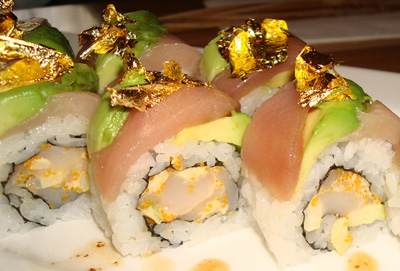
Tataki also offers an extensive list of vegetarian rolls. After all, as Trenor rightly notes: To eat sustainably is not only to eat sustainable seafood, but to eat less of it, too.
 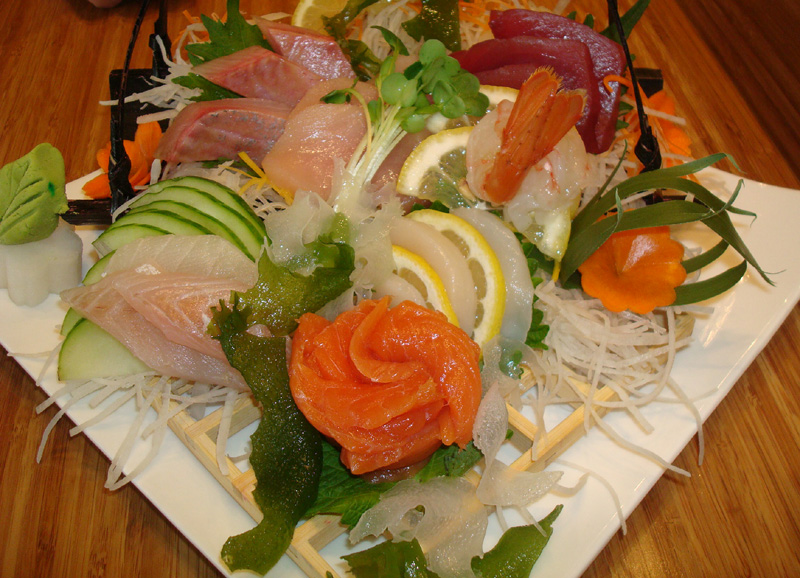

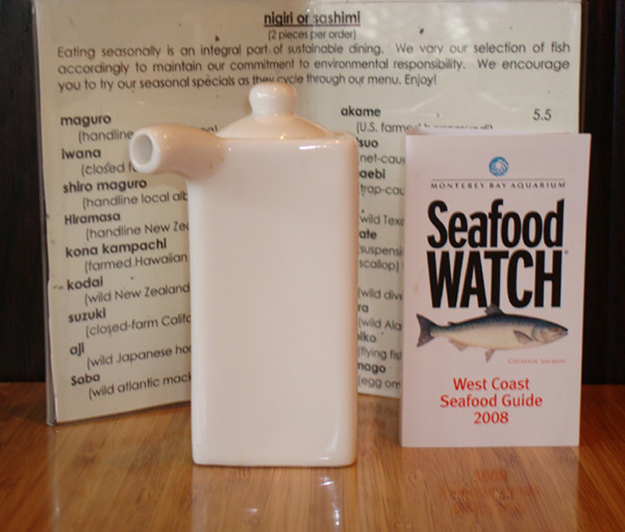
Good for Tataki, and good for you for highlighting their responsible practices. I’m passing your post along to a colleague in Boston who frequently writes about sustainable seafood.
Carolyn
It was great to see your article in the Chronicle today. I hope you do lots of stuff for them. I am an avid reader of the Wednesday food section.
Carolyln – best food conscious piece we’ve seen in a while! Sushi certainly languishes behind other cuisines in the sustainability crowd. Thanks for writing it. Have you eaten at Medicine, the vegan Buddhist ‘temple’ cuisine lunch spot in Crocker Galleria? They recently added sustainable fish.
I ate at Medicine a few years ago, when it first opened. But did not know it was also serving sustainable sushi. Glad to see this trend is definitely catching on.
Congratulations on the article in the Chronicle. It was very well-written. I hope to see more!
I’ll have to get my hands on the sustainable sushi guide and take it to our favorite sushi place. Is Tataki the only place to pick up the guide?
Thanks, Nate. Just as with the Monterey Bay Aquarium’s popular “Seafood Watch” pocket card, you’ll be able to get a handy sustainable sushi guide free starting Oct. 22 on the aquarium’s web site, or on the web sites for Blue Ocean Institute and the Environmental Defense Fund.
Excellent article. I lived in Japan for a while and am always interested in finding high quality sushi- sustainable is such a great idea for a sushi restaurant. 🙂
-Sea
Wow, I can’t wait to try this place. And a big Congrats!!!
FoodGal, read your article in the Chron and thought it was really interesting. This is definitely on my list of places to try!
Carolyn- good job and a great job with the SFGate! We saw it and I tried to comment but couldn’t sign in! Well done Food Gal.
Doesn’t it seem to be a contradiction in terms to have a sustainable restaurant that features a dish that includes edible gold? Where is the gold coming from? Perhaps I am uninformed, but I’ve never heard of an eco-friendly mining operation.
Actually, I did ask about the edible gold and its source. The owners were not sure about it, though I suppose they are hoping it has California origins even if there probably isn’t all that much unmined, accessible gold left in this state.
Pingback: Charles Hamel.com
Pingback: Food Gal » Blog Archiv » Scenes From “Cooking for Solutions” at the Monterey Bay Aquarium